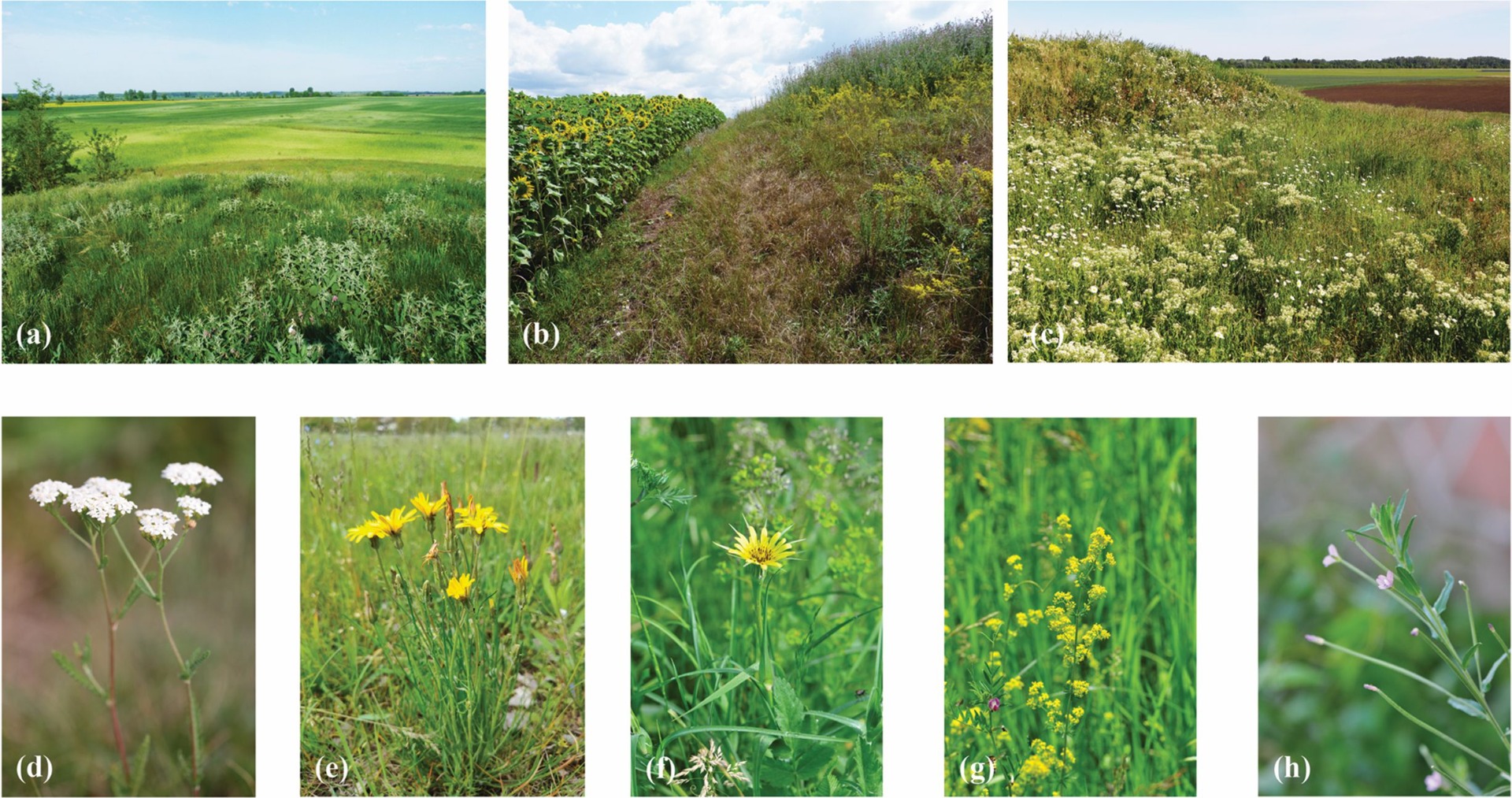Kurgans holding small grassland patches provide hotspots for medicinal plant and associated phytochemical diversity in agricultural landscapes
Our recent study published in the Plants, People, Planet journal revealed that ancient burial mounds – also known as kurgans – play a crucial role in preserving medicinal plant species and their phytochemical diversity within European agricultural landscapes. These mounds, constructed thousands of years ago by steppe nomadic cultures, are widely distributed across the Eurasian steppe biome. While their original grassland vegetation has often been destroyed by agricultural activities, in many cases they remain intact – often due to their spiritual, historical, or cultural significance. These intact mounds are commonly covered by natural or semi-natural grasslands, forming isolated ecological refuges in otherwise intensively cultivated areas. In other cases – thanks to agri-environmental schemes supporting the cessation of arable farming on mounds – these sites are now covered by spontaneously recovering grassland vegetation. Based on our former field observations, we assumed that kurgans have the potential to serve as habitats for medicinal plant species. However, this specific ecosystem function has not been previously studied in any region.
We surveyed 166 kurgans in Hungary to assess their role in conserving medicinal plants and the phytochemical compounds they produce. We identified over 160 species of medicinal plants, many of which are rarely found in the surrounding agricultural matrix. Importantly, kurgans harbour not only plant species diversity but also a broad spectrum of secondary metabolites, which contribute to ecosystem resilience. In total, we recorded 33 secondary metabolite groups in the vegetation of the mounds, 23 of which were associated with grassland-related medicinal plants.

These compounds enable plants to survive drought, herbivory, and intense solar radiation – factors that are becoming increasingly common due to climate change and intensive land use. We found that the presence and diversity of certain secondary metabolites were strongly linked to environmental conditions and biotic interactions, which followed clear gradients based on vegetation age and level of landscape transformation. For example, mounds covered with older, recovering grasslands were characterized by a higher abundance of species producing iridoids and diterpenes. This is likely due to that, in later successional phases, the shading effect of tall-growing weedy species (that are suppressed by time) decreases, exposing medicinal plants to higher solar radiation, which in turn stimulates the production of these protective compounds. In kurgans surrounded by croplands, medicinal plants frequently produced a wide array of nitrogen-containing compounds, such as alkaloids, saponins, and plant steroids. These function as antifeedant chemicals and may deter crop-feeding pests like rodents – making these small grassland patches valuable not only for biodiversity conservation but also for pest management in adjacent farmlands.
Although plant collection is not permitted on protected kurgans, these sites offer valuable opportunities for conservation, ecological restoration, and environmental education. As natural seed banks, they may help restore medicinal plant populations in degraded landscapes. Our findings underscore the importance of integrating cultural heritage with biodiversity conservation. Once valued solely for their historical significance, kurgans now emerge as key elements of ecological infrastructure, helping to preserve "nature's pharmacy" in modern agricultural regions.
The full study, published in Plants, People, Planet, provides further insights into the links between land use history, soil conditions, and medicinal plant diversity.
The citation of the paper:
Engel, R., Valkó, O, Lengyel, A., Bede, Á, Deák, B. (2025): Small grassland patches are hotspots for medicinal plants and associated phytochemical diversity in European agricultural landscapes. Plants People Planet DOI: 10.1002/ppp3.70074
The paper is open access and can be downloaded from here.
